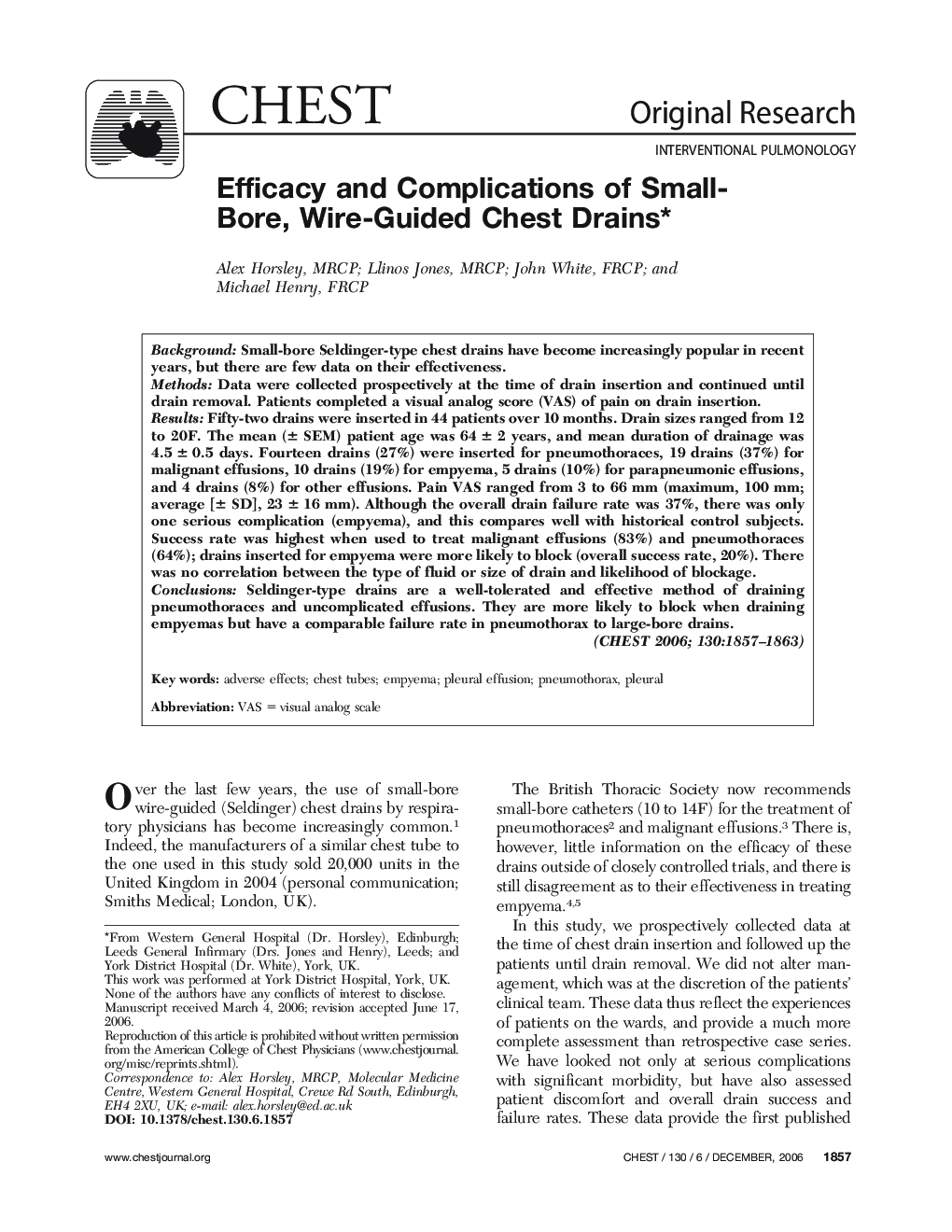| کد مقاله | کد نشریه | سال انتشار | مقاله انگلیسی | نسخه تمام متن |
|---|---|---|---|---|
| 2905724 | 1574868 | 2006 | 7 صفحه PDF | دانلود رایگان |

BackgroundSmall-bore Seldinger-type chest drains have become increasingly popular in recent years, but there are few data on their effectiveness.MethodsData were collected prospectively at the time of drain insertion and continued until drain removal. Patients completed a visual analog score (VAS) of pain on drain insertion.ResultsFifty-two drains were inserted in 44 patients over 10 months. Drain sizes ranged from 12 to 20F. The mean (± SEM) patient age was 64 ± 2 years, and mean duration of drainage was 4.5 ± 0.5 days. Fourteen drains (27%) were inserted for pneumothoraces, 19 drains (37%) for malignant effusions, 10 drains (19%) for empyema, 5 drains (10%) for parapneumonic effusions, and 4 drains (8%) for other effusions. Pain VAS ranged from 3 to 66 mm (maximum, 100 mm; average [± SD], 23 ± 16 mm). Although the overall drain failure rate was 37%, there was only one serious complication (empyema), and this compares well with historical control subjects. Success rate was highest when used to treat malignant effusions (83%) and pneumothoraces (64%); drains inserted for empyema were more likely to block (overall success rate, 20%). There was no correlation between the type of fluid or size of drain and likelihood of blockage.ConclusionsSeldinger-type drains are a well-tolerated and effective method of draining pneumothoraces and uncomplicated effusions. They are more likely to block when draining empyemas but have a comparable failure rate in pneumothorax to large-bore drains.
Journal: Chest - Volume 130, Issue 6, December 2006, Pages 1857–1863